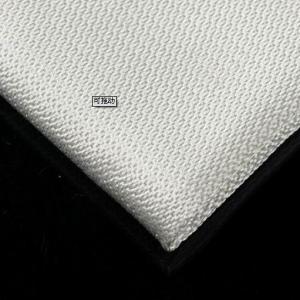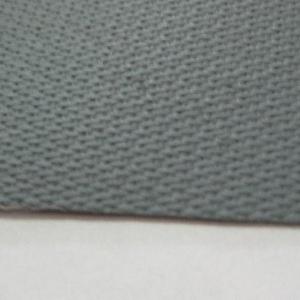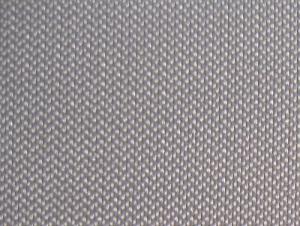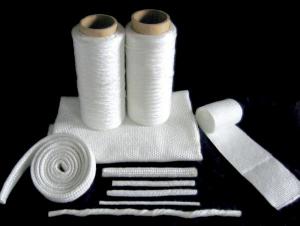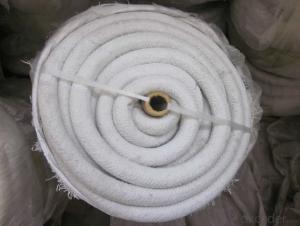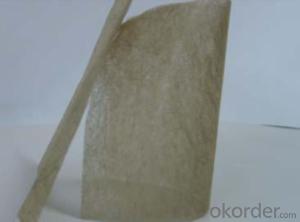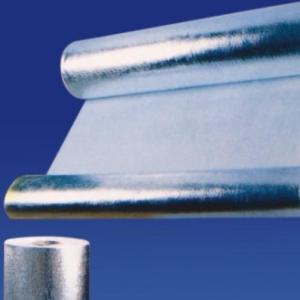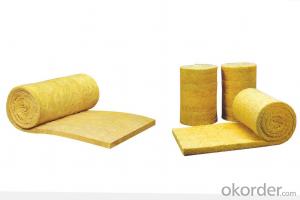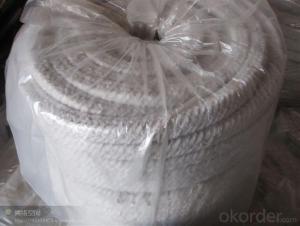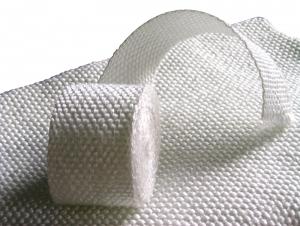Silicone Coated Fiberglass Fabric
- Loading Port:
- China Main Port
- Payment Terms:
- TT or L/C
- Min Order Qty:
- 10 tons kg
- Supply Capability:
- 2*20FCL Per Month kg/month
OKorder Service Pledge
OKorder Financial Service
You Might Also Like
General information of Silicone Coated Fiberglass Fabric
Silicone fiberglass fabric is made with the basal material of high temperature resistant fiberglass fabric and silicone rubber by follow-processing; It is a compound material with high quality of performance. It has been widely used in spaceflight, chemical industry, petroleum, large generating electricity equipment, machinery, metallurgy, electric insulation, construction and other fields.
Main capability and characteristics of Silicone Coated Fiberglass Fabric:
1). Good performance on resisting high temperature and low temperature, (the resistance of lowest temperature: -70 degrees to highest temperature: 280 degrees); Good capability on temperature maintaining;
2). High strength: It is soft and ductile, could be tailored;
3). Good capability on chemical corrosion resistant, oil-proofing, waterproofing (washable);
4). Heat-aging and chemical-aging resistant, and preventing from ozone, oxygen and light;
5). High insulation performance, constant dielectric: 3-3.2, breakdown voltage20-50kv/mm.
Main application of Silicone Coated Fiberglass Fabric:
Fiberglass fabric coated with silicon rubber product is a new complex material which has been widely used in such fields as: Construction, electric insulation, pipeline ductile conjunction, chemical corrosion resistant, sealing, etc. The main using fields are:
1). Electric insulation:
Fiberglass fabric material coated with silicon rubber has high electric insulation grade, and it could endure high voltage load, be made into insulated fabric, pipeline, etc
2). Non-metal compensating facility:
Non-metal compensating facility is an instrument for pipeline ductile injunction, and it could solve such sabotage problems to pipeline as heat inflating-cold reducing; It is used as the basic material of ductile inflating knot, having the capability of high using temperature, corrosion resistant, seasoning resistant, good elasticity and ductile. This kind of product has been widely used in petroleum, chemical industry, cement, steel and copper, energy, etc, and has got good using efficiency;
3). Corrosion proofing field
Fiberglass fabric coated with silicon rubber could be used as external and internal corrosion proofing layer of pipeline and preservation jar, and it has excellent corrosion resistance, good capability to resist high temperature, high strength, so it is an ideal corrosion-proofing material.
4). Other fields:
Fiberglass fabric coated with silicon rubber could be used on sealing material of construction, high temperature corrosion-proofing belt, packing material, etc.


- Q:How do glass fiber textiles perform in terms of dimensional stability?
- Glass fiber textiles are known for their excellent dimensional stability. This means that they are resistant to changes in size or shape when subjected to external forces or environmental conditions. The unique composition of glass fibers, being made from molten glass that is drawn into thin strands, provides them with inherent strength and rigidity. As a result, glass fiber textiles retain their shape and size even under extreme temperatures, moisture, or mechanical stress. The dimensional stability of glass fiber textiles can be attributed to their low thermal expansion coefficient. This means that they do not expand or contract significantly when exposed to heat or cold, making them suitable for applications that require precise dimensions. Additionally, glass fibers have high tensile strength, which means they can resist stretching or elongation when subjected to pulling forces. This characteristic further contributes to their dimensional stability. Glass fiber textiles also exhibit good resistance to moisture absorption, which helps prevent swelling or shrinkage when exposed to humidity or water. This is particularly important in applications where dimensional accuracy is critical, such as in the construction of composite materials or reinforcement in structures. Overall, glass fiber textiles offer exceptional dimensional stability, making them a preferred choice in industries such as aerospace, automotive, construction, and marine. Their ability to maintain their size and shape under various conditions ensures reliable performance and longevity in demanding applications.
- Q:Are glass fiber textiles fire resistant?
- Glass fiber textiles, in general, possess fire resistance. These textiles are formed by spinning molten glass into thin fibers, which are then woven or knitted. With a high melting point, they are not easily ignited when exposed to heat or flame. Additionally, glass fiber textiles exhibit low thermal conductivity, meaning they poorly conduct heat, thus reducing the risk of fire propagation. They find widespread use in applications that prioritize fire resistance, such as protective clothing, curtains, and insulation materials. However, it should be emphasized that while glass fiber textiles are fire resistant, they are not entirely fireproof and can still be harmed or destroyed by intense heat or prolonged exposure to flames.
- Q:Can glass fiber textile be used in battery technology?
- Yes, glass fiber textile can be used in battery technology. Glass fiber textiles are known for their high strength, durability, and resistance to chemicals and heat. These properties make them suitable for various applications in battery technology. One way glass fiber textile can be used in battery technology is as a separator material. Batteries consist of positive and negative electrodes, and a separator is needed to prevent these electrodes from coming into direct contact with each other. Glass fiber textiles can serve as an effective separator due to their ability to withstand high temperatures and resist degradation from the electrolyte present in batteries. Glass fiber textiles can also be used as reinforcement material in battery electrodes. Battery electrodes typically consist of a current collector and an active material, which stores and releases energy during the charging and discharging process. By incorporating glass fiber textiles into the electrode structure, the overall strength and mechanical stability of the electrode can be improved, leading to enhanced battery performance and longevity. Furthermore, glass fiber textiles can be used in battery packaging to provide insulation and protection. Batteries generate heat during operation, and it is crucial to manage and dissipate this heat to ensure safe and efficient battery functioning. Glass fiber textiles can act as a thermal barrier, preventing excessive heat from escaping or entering the battery, thus maintaining optimal operating temperatures. In summary, glass fiber textiles can indeed be utilized in battery technology for various purposes such as separators, reinforcement materials, and thermal barriers. Their exceptional strength, durability, and resistance to chemicals and heat make them suitable for enhancing battery performance, safety, and longevity.
- Q:Can glass fiber textiles be used for reinforcement in ceramics?
- Glass fiber textiles, or fiberglass, possess exceptional characteristics including remarkable tensile strength, resistance to high temperatures, and chemicals. These properties render them appropriate for reinforcing ceramics, thereby augmenting the ceramics' strength and durability. Additionally, glass fiber textiles can be woven effortlessly into different shapes and sizes, providing tailor-made reinforcement solutions for diverse ceramic applications. In summary, glass fiber textiles present an economical and effective means of enhancing the mechanical properties of ceramics, making them a highly favored option for reinforcing ceramic products.
- Q:How is glass fiber textile used in the construction industry?
- Glass fiber textile is widely used in the construction industry for its strength and durability. It is commonly used as a reinforcement material in concrete, providing added strength and resistance to cracking. Glass fiber textile is also used as insulation material in buildings, helping to improve energy efficiency and reduce heat transfer. Additionally, it is used in the production of composite materials, such as fiberglass panels and sheets, which are used in various construction applications like roofing, walls, and flooring. Overall, glass fiber textile plays a crucial role in enhancing the structural integrity and performance of buildings in the construction industry.
- Q:Are glass fiber textiles resistant to creasing?
- Glass fiber textiles are highly resistant to creasing. This is because glass fibers are inherently stiff and strong, which prevents them from easily bending or folding. Additionally, glass fiber textiles are often treated with special coatings or finishes that further enhance their resistance to creasing. This makes them a preferred choice in applications where creasing or wrinkling is a concern, such as in the production of durable and wrinkle-resistant clothing, upholstery, and industrial materials. Overall, glass fiber textiles offer excellent crease resistance and maintain their shape and structure even under high levels of stress or pressure.
- Q:How are glass fiber textiles used in the electronics industry?
- Glass fiber textiles are widely used in the electronics industry for a variety of applications. One of the primary uses of glass fiber textiles is for insulation purposes. These textiles are highly resistant to heat and have excellent electrical insulation properties, making them ideal for creating protective barriers around sensitive electronic components. This insulation helps to prevent heat transfer and electrical short circuits, ensuring the safe operation of electronic devices. Glass fiber textiles are also used in the manufacturing of printed circuit boards (PCBs). PCBs are the backbone of electronic devices, providing the necessary connections between various components. Glass fiber textiles, in the form of epoxy glass laminates, are used as the base material for PCBs. The textiles are impregnated with epoxy resin and then layered with copper sheets, creating a strong and durable substrate for the circuitry. Moreover, glass fiber textiles are utilized for reinforcing electronic components. By incorporating glass fibers into the manufacturing process of various electronic parts, such as connectors, switches, and housings, the overall strength and structural integrity of these components are enhanced. This reinforcement allows for better resistance against mechanical stress, such as impacts or vibrations, ensuring the longevity and reliability of electronic devices. In addition, glass fiber textiles find applications in electromagnetic shielding. The textiles can be woven into conductive fabrics, which can be used to create shielding enclosures or covers for electronic devices. This shielding helps to prevent electromagnetic interference (EMI) and radio frequency interference (RFI) from affecting the performance of sensitive electronic circuits. By effectively blocking these interferences, glass fiber textiles contribute to maintaining the quality of signal transmission and reception in electronic devices. Overall, glass fiber textiles play a vital role in the electronics industry by providing insulation, serving as PCB substrates, reinforcing electronic components, and contributing to electromagnetic shielding. Their thermal and electrical insulation properties, combined with their strength and durability, make them an essential material for ensuring the proper functioning and protection of electronic devices.
- Q:Are glass fiber textiles resistant to electricity?
- Yes, glass fiber textiles are resistant to electricity. Glass fibers are inherently non-conductive and do not conduct electricity. This property makes them excellent insulators, making glass fiber textiles highly resistant to electrical current. They are commonly used in applications where electrical insulation is required, such as in electrical wiring, circuit boards, and electronic devices. Additionally, glass fiber textiles are also resistant to heat, chemicals, and corrosion, further enhancing their suitability for electrical applications.
- Q:Can glass fiber textiles be used in protective helmets?
- Yes, glass fiber textiles can be used in protective helmets. Glass fiber textiles are known for their high strength and impact resistance, making them suitable for enhancing the protective capabilities of helmets. They can provide added reinforcement and durability, helping to absorb and distribute impact forces, thereby increasing the overall safety of the helmet.
- Q:Can glass fiber textiles be used in reinforcement of coir fibers?
- Yes, glass fiber textiles can be used as a reinforcement material for coir fibers. The combination of glass fiber textiles and coir fibers can enhance the overall strength and durability of the composite material.
1. Manufacturer Overview |
|
|---|---|
| Location | |
| Year Established | |
| Annual Output Value | |
| Main Markets | |
| Company Certifications | |
2. Manufacturer Certificates |
|
|---|---|
| a) Certification Name | |
| Range | |
| Reference | |
| Validity Period | |
3. Manufacturer Capability |
|
|---|---|
| a)Trade Capacity | |
| Nearest Port | |
| Export Percentage | |
| No.of Employees in Trade Department | |
| Language Spoken: | |
| b)Factory Information | |
| Factory Size: | |
| No. of Production Lines | |
| Contract Manufacturing | |
| Product Price Range | |
Send your message to us
Silicone Coated Fiberglass Fabric
- Loading Port:
- China Main Port
- Payment Terms:
- TT or L/C
- Min Order Qty:
- 10 tons kg
- Supply Capability:
- 2*20FCL Per Month kg/month
OKorder Service Pledge
OKorder Financial Service
Similar products
New products
Hot products
Related keywords
